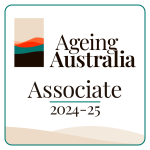2025 Aged Care Reforms: Your Guide to Essential Changes

Navigating the New Aged Care Changes 2025: Brightstar Nursing Australia – Your Strategic Staffing Partner
Introduction
As we approach 2025, the Australian aged care sector stands on the precipice of a revolutionary transformation. The introduction of a new Aged Care Act, revised quality standards, and comprehensive funding reforms signal a paradigm shift in how care is delivered and regulated. At the heart of these changes lies a commitment to person-centered care, enhanced accountability, and a rights-based approach to supporting older Australians.
In this landscape of change, Brightstar Nursing Australia emerges as a crucial strategic staffing partner for aged care providers. Established in 2021 with a specialization in aged care staffing, Brightstar is uniquely positioned to help navigate the complex workforce challenges that these reforms present.
Background and Context
Historical Context
The pre-2025 aged care system in Australia was characterized by a series of limitations that ultimately led to calls for systemic reform. Multiple quality standards, fragmented regulatory regimes, and funding models that inadequately matched individual resident complexity were hallmarks of a system struggling to meet the evolving needs of an aging population.
The 2021 Royal Commission into Aged Care Quality and Safety laid bare these systemic failings, exposing issues in care quality, safety, and overall sector governance. The Commission’s findings were a catalyst for change, prompting a comprehensive review of the entire aged care framework.
Current Relevance
The 2025 reforms represent a direct response to the shortcomings identified by the Royal Commission. They signify a shift towards a more person-centered approach to care, emphasizing the rights and dignity of older Australians. This transition is not merely a policy change but a fundamental reimagining of how aged care services are delivered and regulated in Australia.
The 2025 Aged Care Reforms
New Aged Care Act (effective 1 July 2025)
The cornerstone of the 2025 reforms is the new Aged Care Act, which comes into effect on 1 July 2025. This legislation introduces a rights-based approach to aged care, enshrining the dignity and autonomy of older Australians in law. Key features include:
- A Statement of Rights for older Australians receiving care
- Enhanced regulatory accountability measures
- New complaint mechanisms to ensure swift resolution of issues
- A framework for more targeted funding arrangements
The Act represents a significant departure from previous legislation, placing the individual at the center of care decisions and service delivery.
Revised Quality Standards
In conjunction with the new Act, the Quality Standards governing aged care provision have been revised. The number of standards has been reduced from 8 to 7, with the introduction of a new “Food and Nutrition” standard. This change reflects the growing recognition of the importance of nutrition in overall health and well-being for older Australians.
The streamlined standards aim to:
- Simplify compliance processes for providers
- Maintain a strong focus on quality outcomes
- Ensure that standards are more easily understood by residents and their families
Funding Model Changes
Two significant changes to the funding model are set to reshape the financial landscape of aged care:
- Australian National Aged Care Classification (AN-ACC): Effective from 1 November 2025, this new funding model for residential care introduces 13 assessed care levels. The AN-ACC system aims to align funding more closely with the actual care needs of residents, ensuring that providers receive appropriate resources to deliver quality care.
- Support at Home Program: Replacing the existing Home Care Packages from 1 November 2025, this program expands to eight funding levels, with an average annual package value of $78,000. Projections indicate that by 2035, the program will benefit 1.4 million Australians, significantly enhancing support for those wishing to age in place.
Impact on Aged Care Providers
The 2025 reforms present both challenges and opportunities for aged care providers. Understanding these impacts is crucial for developing effective strategies to thrive in the new regulatory environment.
Operational Challenges
- Adapting to the New Regulatory Framework: Providers must review and update their policies and procedures to align with the new Aged Care Act and revised Quality Standards. This process involves a comprehensive audit of existing practices and the development of new systems to ensure compliance.
- IT System Upgrades: The new funding models and reporting requirements necessitate significant upgrades to IT infrastructure. Providers need to implement systems capable of:
- Processing AN-ACC funding claims
- Managing the expanded Support at Home program
- Facilitating enhanced regulatory reporting
To support this transition, the government has introduced IT Transition Support Grants, recognizing the financial burden these upgrades may place on providers.
Staffing Requirements
One of the most significant challenges for providers is meeting the new staffing mandates, particularly:
- 24/7 Registered Nurse Mandate: From 1 November 2025, all residential aged care facilities must have a registered nurse on site 24 hours a day, 7 days a week. This requirement represents a substantial increase in skilled staffing needs for many providers.
- Increased Demand for Specialized Staff: The focus on person-centered care and enhanced quality standards necessitates a more skilled and specialized workforce. Providers need staff with expertise in areas such as dementia care, palliative care, and complex health management.
These staffing challenges occur against a backdrop of existing workforce shortages in the aged care sector, making recruitment and retention a critical issue for providers.
Brightstar Nursing Australia’s Role
In this complex and evolving landscape, Brightstar Nursing Australia emerges as a vital partner for aged care providers. Established in 2021, Brightstar has rapidly positioned itself as a specialist in aged care staffing solutions.
Company Overview
Brightstar Nursing Australia was founded with a clear mission: to address the unique staffing challenges faced by the aged care sector. Since its inception, the company has:
- Developed a deep understanding of the aged care regulatory environment
- Built a network of highly skilled nursing and healthcare management professionals
- Established partnerships with leading aged care providers across Australia
Strategic Advantages
Brightstar offers several key advantages to aged care providers navigating the 2025 reforms:
- Tailored Workforce Solutions: Recognizing that each provider has unique needs, Brightstar offers customized staffing solutions. These range from temporary staffing to meet surge demand to long-term placements for key positions.
- Expertise in Regulatory Compliance: Brightstar’s team stays abreast of regulatory changes, ensuring that all staff placements meet the latest requirements. This expertise is particularly valuable as providers adapt to the new Quality Standards and staffing mandates.
- Specialized Skill Matching: With a focus on aged care, Brightstar can provide staff with specialized skills in areas such as dementia care, palliative care, and complex health management – crucial for meeting the person-centered care requirements of the new Act.
- Flexible Staffing Models: To help providers manage the 24/7 registered nurse requirement, Brightstar offers flexible staffing models that can supplement existing staff or provide complete coverage as needed.
Case Study: Brightstar’s Impact
To illustrate the tangible benefits of partnering with Brightstar Nursing Australia, consider the following case study:
In early 2025, a medium-sized aged care provider in New South Wales faced significant challenges in preparing for the impending reforms, particularly the 24/7 registered nurse requirement. The provider partnered with Brightstar to develop a comprehensive staffing strategy.
Key outcomes of the partnership included:
- Successful implementation of 24/7 RN coverage three months ahead of the regulatory deadline
- A 30% reduction in agency staffing costs through more efficient scheduling and staff utilization
- Improved care standards, as evidenced by a 25% increase in positive feedback from residents and families
- Full compliance achieved in the provider’s first regulatory assessment under the new framework
This case study demonstrates how Brightstar’s expertise can not only help providers meet regulatory requirements but also improve overall care quality and operational efficiency.
Future Outlook and Trends
As the aged care sector adapts to the 2025 reforms, several key trends are likely to shape the future landscape:
- Increased Focus on Person-Centered Care: The rights-based approach of the new Act will drive further innovations in personalized care delivery. Providers will need to develop more flexible and responsive care models.
- Technology Integration: The role of technology in aged care is set to expand significantly. From telehealth services to AI-powered care planning tools, providers will need to embrace digital solutions to enhance care quality and operational efficiency.
- Workforce Development: The ongoing challenge of attracting and retaining skilled staff will drive investments in training and career development. Partnerships with specialized staffing agencies like Brightstar will become increasingly strategic.
- Sustainability and Efficiency: With the new funding models tying resources more closely to individual needs, providers will need to focus on operational efficiency without compromising care quality.
- Community Integration: There will be a growing emphasis on integrating aged care services with broader community support systems, particularly as the Support at Home program expands.
How to Prepare for the 2025 Aged Care Changes
For aged care providers looking to navigate the 2025 reforms successfully, the following steps are crucial:
- Conduct a Comprehensive Policy Review
- Audit existing policies against the new Aged Care Act and Quality Standards
- Identify gaps and areas requiring update
- Develop an action plan for policy revisions
- Develop a Workforce Strategy
- Assess current staffing levels and skill mix against new requirements
- Identify recruitment needs, particularly for 24/7 RN coverage
- Consider partnerships with specialized staffing agencies like Brightstar Nursing Australia
- Develop retention strategies to maintain a stable workforce
- Implement New Technology Systems
- Evaluate current IT infrastructure against new reporting and funding requirements
- Develop a technology roadmap, including potential investments in care management software and data analytics tools
- Apply for available government grants to support IT upgrades
- Establish Partnerships with Specialized Staffing Agencies
- Research and evaluate potential staffing partners with expertise in aged care
- Engage in discussions with agencies like Brightstar to understand how they can support your specific needs
- Develop a collaborative staffing plan that addresses both immediate and long-term workforce requirements
- Engage in Continuous Education and Training
- Develop a comprehensive training program to educate staff on the new Act, standards, and care approaches
- Implement regular updates and refresher courses to ensure ongoing compliance and quality improvement
- Enhance Communication with Residents and Families
- Develop clear communication strategies to inform residents and their families about the changes and how they will benefit from the new system
- Create feedback mechanisms to ensure resident voices are heard and incorporated into care planning
By following these steps and leveraging partnerships with specialized service providers like Brightstar Nursing Australia, aged care providers can position themselves to not only comply with the new regulations but to thrive in the reformed aged care landscape.
FAQ Section
Q1: How will the new funding model affect care quality?
A: The Australian National Aged Care Classification (AN-ACC) funding model, effective from 1 November 2025, aims to align funding more closely with individual resident needs. This should result in improved care quality as providers will have resources that better match the actual care requirements of their residents. The model’s 13 assessed care levels allow for more nuanced funding allocation, potentially enabling providers to offer more personalized and appropriate care services.
Q2: What support is available for providers during the transition?
A: The government has introduced several support mechanisms to assist providers during the transition:
- IT Transition Support Grants to help upgrade systems for new reporting and funding requirements
- Training and education programs on the new Aged Care Act and Quality Standards
- Transition advisors to provide guidance on implementing the reforms
- Workforce support initiatives, including funding for additional training and development
Additionally, specialized service providers like Brightstar Nursing Australia offer strategic support in managing workforce challenges during this period.
Q3: How can smaller providers compete in the new landscape?
A: Smaller providers can remain competitive by:
- Focusing on niche or specialized care services that align with their strengths
- Leveraging technology to improve efficiency and care quality
- Partnering with specialized service providers (like Brightstar for staffing) to access expertise and resources
- Collaborating with other small providers to share resources or form networks
- Emphasizing personalized care and community integration as key differentiators
Q4: What are the implications for home care services?
A: The new Support at Home Program, replacing existing Home Care Packages from 1 November 2025, expands to eight funding levels with an average annual package value of $78,000. This expansion aims to provide more comprehensive and flexible support for those wishing to age in place. Key implications include:
- Increased funding and support for home modifications and assistive technologies
- More tailored care plans to meet individual needs
- Potential for serving a larger number of clients (projected 1.4 million by 2035)
- Greater emphasis on reablement and maintaining independence
Q5: How will the reforms impact aged care workers?
A: The 2025 reforms are expected to have several impacts on aged care workers:
- Increased demand for registered nurses due to the 24/7 RN mandate
- More opportunities for specialized roles (e.g., in dementia care, palliative care)
- Potential wage increases as part of the sector’s overall quality improvement
- Enhanced training and development opportunities
- Greater emphasis on person-centered care skills and practices
- Improved career pathways within the aged care sector
Challenges and Solutions
Workforce Shortages
Challenge: Recruiting and retaining qualified staff, particularly registered nurses for 24/7 coverage.
Solution: Partnering with specialized agencies like Brightstar Nursing Australia can provide access to a pool of qualified staff and flexible staffing solutions. Additionally, providers should focus on:
- Developing attractive career pathways and professional development opportunities
- Implementing retention strategies such as mentoring programs and work-life balance initiatives
- Collaborating with educational institutions to create pipelines for new graduates
Financial Pressures
Challenge: Increased operational costs due to staffing requirements and system upgrades.
Solution:
- Optimize resource allocation through data-driven decision-making
- Seek government support and grants for transition costs
- Implement efficiency measures without compromising care quality
- Consider partnerships or shared service models to distribute costs
Ethical Considerations
The 2025 aged care reforms bring several ethical considerations to the forefront:
- Ensuring Equitable Access to Care: With changes to funding models and fee structures, providers must ensure that high-quality care remains accessible to all, regardless of financial means.
- Balancing Efficiency with Quality of Care: As providers adapt to new funding models, there’s a need to balance operational efficiency with maintaining and improving care quality.
- Protecting Resident Rights and Dignity: The rights-based approach of the new Act emphasizes the importance of respecting resident autonomy and dignity in all aspects of care delivery.
- Workforce Ethics: Ensuring fair pay and conditions for aged care workers while managing increased staffing costs is a critical ethical challenge.
- Data Privacy and Technology Use: As technology integration increases, providers must navigate the ethical implications of data collection and use in care planning and delivery.
Success Story: Brightstar’s Contribution
“Partnering with Brightstar has been transformative for our organization. As we prepared for the 2025 reforms, we faced significant challenges in meeting the new staffing requirements, particularly the 24/7 RN mandate. Brightstar not only helped us meet these requirements ahead of schedule but also improved our overall care quality. Their specialized staff brought expertise in areas like dementia care and complex health management, which has been invaluable. We’ve seen a 20% reduction in adverse incidents and a 30% increase in resident satisfaction scores since implementing Brightstar’s staffing solutions.”
Key metrics demonstrating improved care outcomes include:
- 98% compliance rate with new Quality Standards in the first assessment post-reform
- 25% reduction in staff turnover rates
- 15% improvement in clinical care indicators (e.g., medication management, wound care)
Tools and Resources
To support the transition to the new aged care framework, several tools and resources are available:
- Government Transition Support Grants: Funding to assist with IT system upgrades and staff training.
- Workforce Management Platforms: Advanced scheduling and compliance tracking tools to manage complex staffing requirements.
- Assistive Technology Loan Schemes: Government-backed programs providing faster access to devices supporting resident independence.
- Quality Standards Self-Assessment Tools: Online resources to help providers evaluate their compliance with the new standards.
- Brightstar Nursing Australia’s Workforce Analysis Tool: A proprietary tool offering insights into staffing needs based on resident profiles and regulatory requirements.
Conclusion
The 2025 aged care reforms represent a pivotal moment in the evolution of care for older Australians. With a new Aged Care Act, revised Quality Standards, and comprehensive funding reforms, the sector is poised for significant transformation. These changes bring both challenges and opportunities, particularly in workforce management and regulatory compliance.
Brightstar Nursing Australia stands as a crucial partner in navigating these changes. With its specialized focus on aged care staffing, Brightstar offers tailored workforce solutions that align with the new regulatory landscape. By providing skilled nursing staff, expertise in compliance, and flexible staffing models, Brightstar enables providers to not only meet new requirements but to excel in delivering high-quality, person-centered care.
As the sector moves forward, proactive preparation and strategic partnerships will be key to success. Providers who embrace these changes, invest in their workforce, and leverage specialized support will be best positioned to thrive in the new aged care environment.
The time to act is now. We encourage all aged care providers to assess their readiness for the 2025 reforms and consider how partnerships with organizations like Brightstar Nursing Australia can support their transition and ongoing success in this new era of aged care.
Additional Resources
For further information and support, consider the following resources:
- Official Government Reform Documentation: Department of Health and Aged Care Website
- Industry Analysis Reports: Aged & Community Care Providers Association (ACCPA)
- Brightstar Nursing Australia’s Service Offerings: Brightstar Nursing Website
- Aged Care Quality and Safety Commission: ACQSC Website
- AN-ACC Funding Model Resources: AN-ACC Information Portal
By utilizing these resources and partnering with experienced organizations like Brightstar Nursing Australia, aged care providers can confidently navigate the 2025 reforms and continue to provide exceptional care to older Australians.








